
DNA Driven Assembly with Nanoparticles
May 27, 2013Nanoparticles can be the bricks for constructing materials from the ground up, with DNA linkers as the mortar that holds them together. Because of the difficulty of attaching DNA strands to nanoparticles, the approach has so far been limited to a few types of nanoparticles. Chad A. Mirkin and coworkers at Northwestern University have devised a general approach that expands the types of nanoparticles that can be used with DNA-guided assembly (Nat. Mater. 2013, DOI: 10.1038/nmat3647).
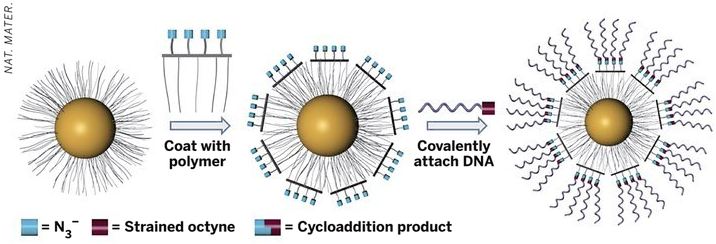
Stem Cell Tracking with Magnetic Particle Imaging (MPI)
May 23, 2013
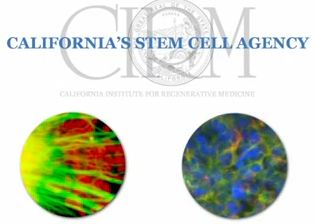
Check out the youtube video here.
Riboflavin carrier protein-targeted fluorescent USPIO for the assessment of vascular metabolism in tumors
May 20, 2013

Check it out in detail here.
Learning from Nature to Improve Heat Generation with Magnetic Nanoparticles
April 13, 2013
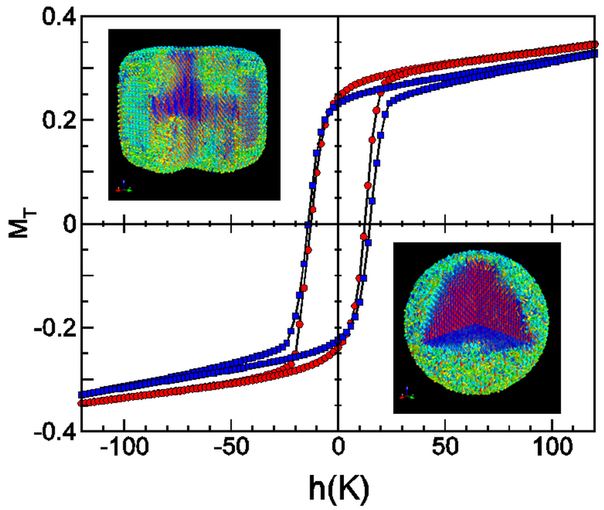
The article is available on Scientific Reports 3, 1652 (2013).
Clinically Relevant Magnetic Particle Applications in New Publications
April 01, 2013
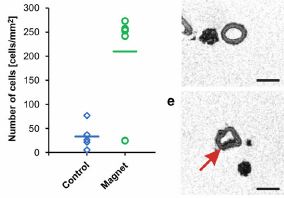
The first is a research paper by Johannes Riegler et al. about the use of magnetically loaded stem cells to improve cell retention in cell therapies for treating vascular injuries. This is a joint research project carried out in both University College London and the National University of Ireland. The article can be downloaded here.
The other is a book chapter included in the last edition of the Specialist Periodical Reports published by the Royal Society of Chemistry (RSC). It is co-authored by Daniel Ortega and Quentin Pankhurst, and it covers the basic physical-chemical-biological aspects of magnetic hyperthermia, including a review of some clinical case studies. If you are interested, you can find it here.
Nobel Laureate Roger Tsien to Speak at MPI Workshop
March 11, 2013
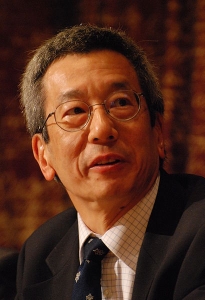 Prof. Roger Y. Tsien, 2008 Nobel Laureate in Chemistry, will deliver a keynote speech on Magnetic Particle Imaging (MPI) at the upcoming International Workshop on MPI (IWMPI 2013) to take place at University of California, Berkeley on March 23-24, 2013.
Prof. Roger Y. Tsien, 2008 Nobel Laureate in Chemistry, will deliver a keynote speech on Magnetic Particle Imaging (MPI) at the upcoming International Workshop on MPI (IWMPI 2013) to take place at University of California, Berkeley on March 23-24, 2013.
Magnetic Nanoparticles Remove Bacteria from Blood
February 11, 2013
 When bacteria build up in the blood, it's bad news. The condition can lead to a serious infection known as sepsis, which can turn deadly even with aggressive treatment using antibiotics. Researchers at Massachusetts Institute of Technology and Harvard Medical School may have found a way to pluck bacterial invaders from blood by magnetic separation. Daniel S. Kohane and coworkers coated magnetic nanoparticles with zinc coordinated bis(dipicolylamine), a complex known to bind strongly to anionic phospholipids that densely decorate the surfaces of bacteria. The researchers added these modified nanoparticles to blood tainted with Escherichia coli and ran the blood through a magnetic microfluidic device. They were able to pull almost all of the bacteria from the blood, even at blood flow rates of 60 mL per hour. The technology, the researchers say. could be adapted to treat sepsis in people, which in the U.S. has become the seventh-leading cause of infant mortality and the 11th-leading cause of death.
When bacteria build up in the blood, it's bad news. The condition can lead to a serious infection known as sepsis, which can turn deadly even with aggressive treatment using antibiotics. Researchers at Massachusetts Institute of Technology and Harvard Medical School may have found a way to pluck bacterial invaders from blood by magnetic separation. Daniel S. Kohane and coworkers coated magnetic nanoparticles with zinc coordinated bis(dipicolylamine), a complex known to bind strongly to anionic phospholipids that densely decorate the surfaces of bacteria. The researchers added these modified nanoparticles to blood tainted with Escherichia coli and ran the blood through a magnetic microfluidic device. They were able to pull almost all of the bacteria from the blood, even at blood flow rates of 60 mL per hour. The technology, the researchers say. could be adapted to treat sepsis in people, which in the U.S. has become the seventh-leading cause of infant mortality and the 11th-leading cause of death.
For more info, check out the preprint.
Investigation of Wear and Tear in Artificial Limbs
February 06, 2013

The ultimate goal is to give manufacturers targets they can home in on to make the implant material more resistant to the environment inside us, so that implants last a lifetime.
For more information, check out our Archives.
September 2017

Search this site with the power of
